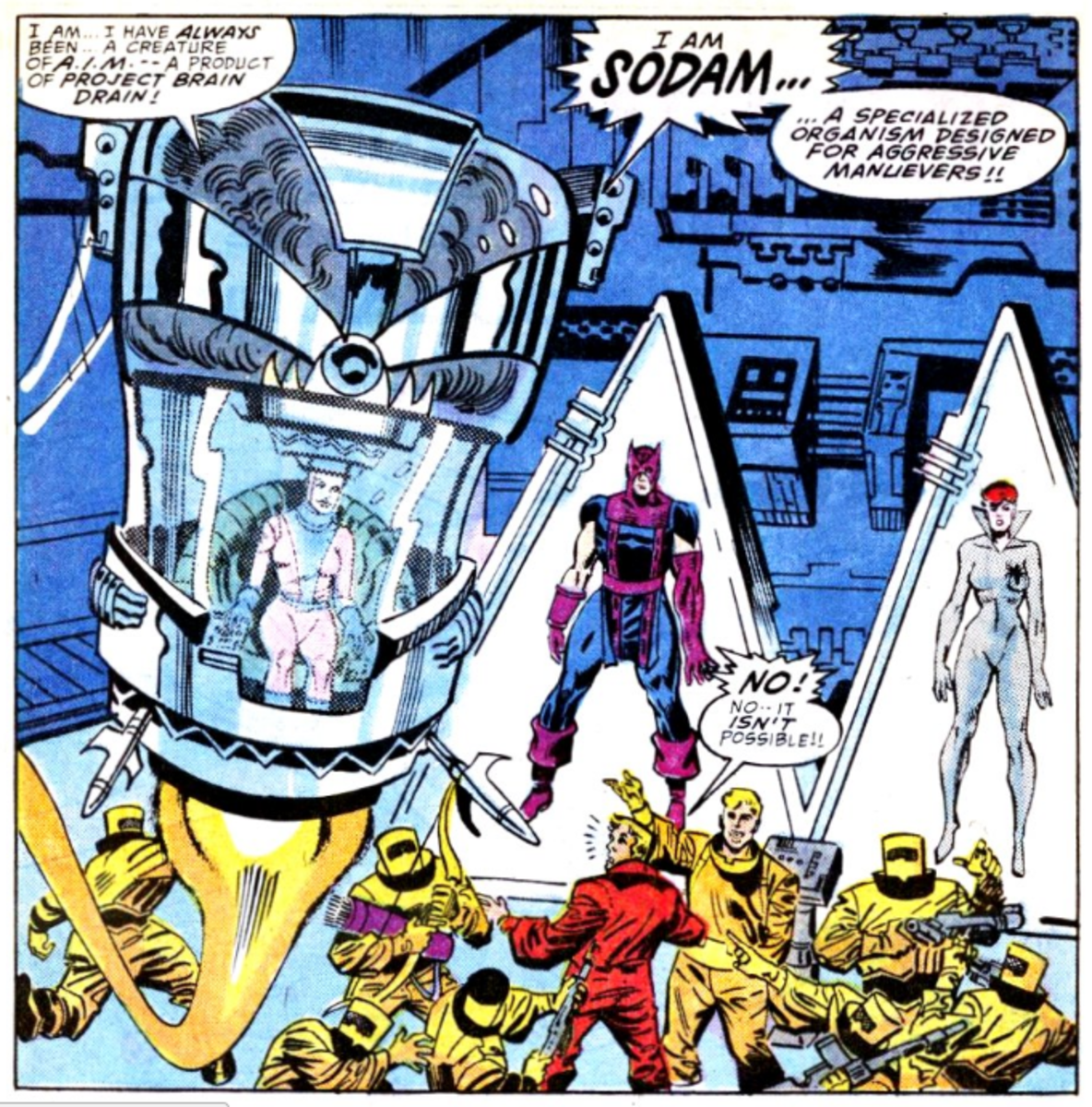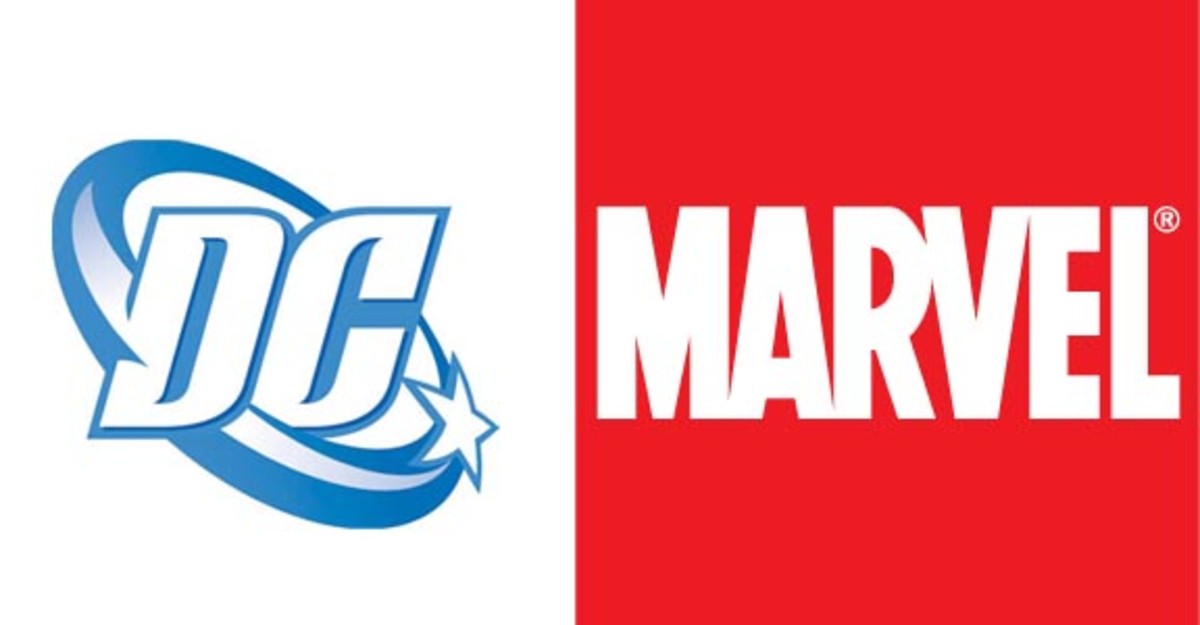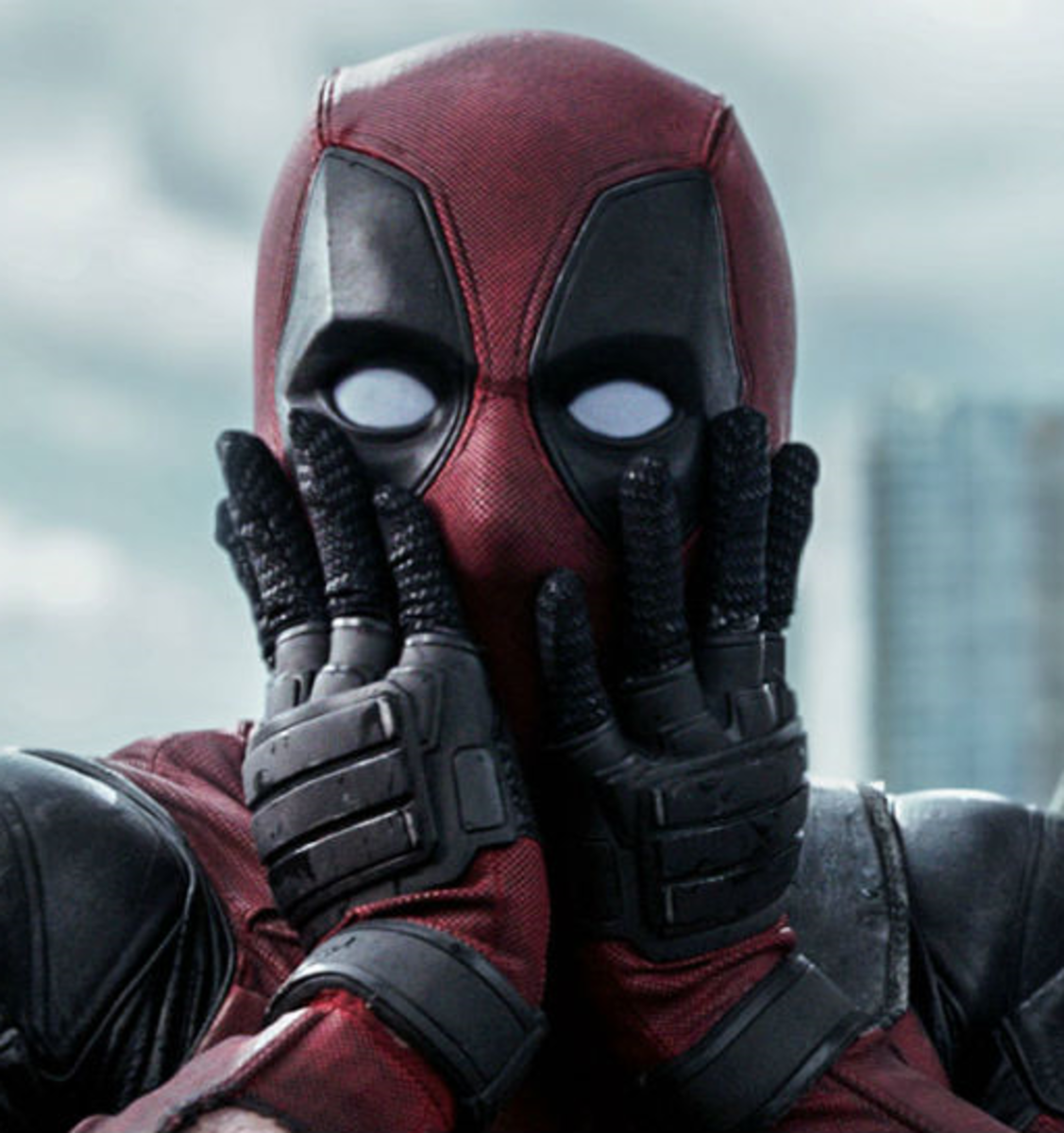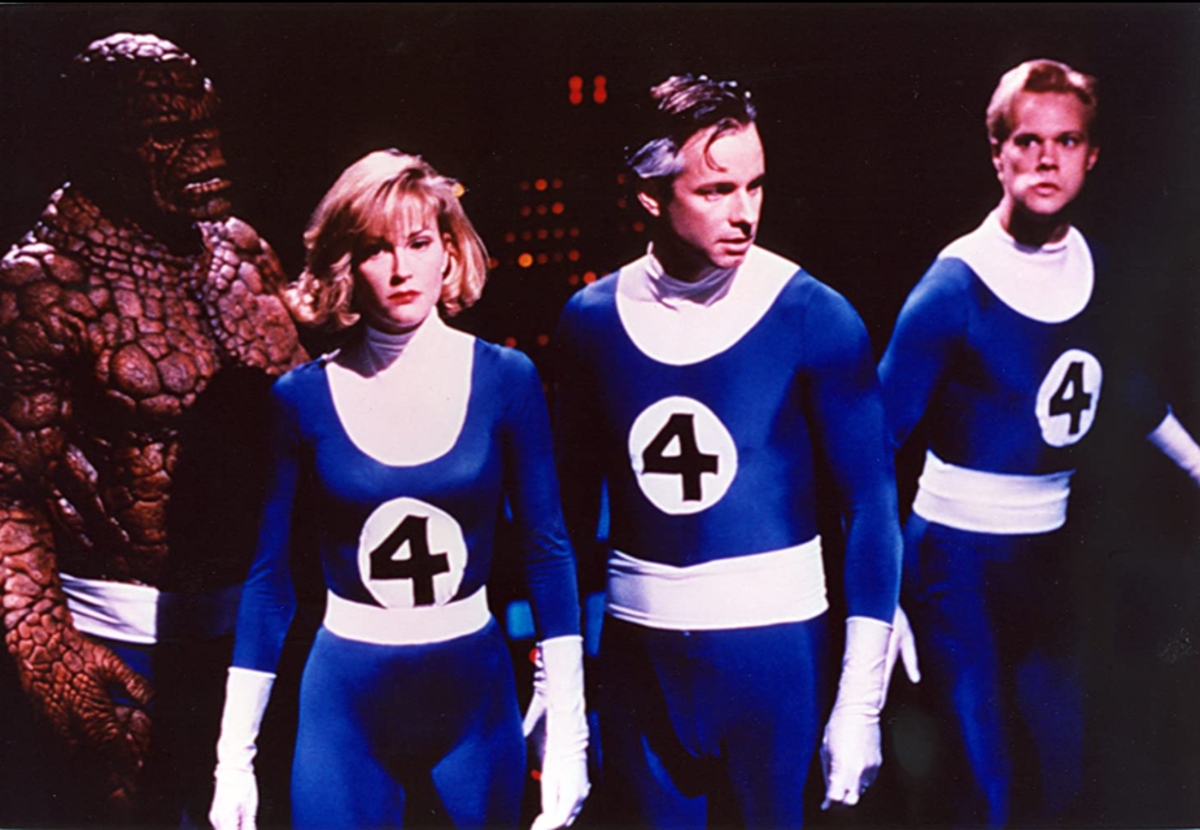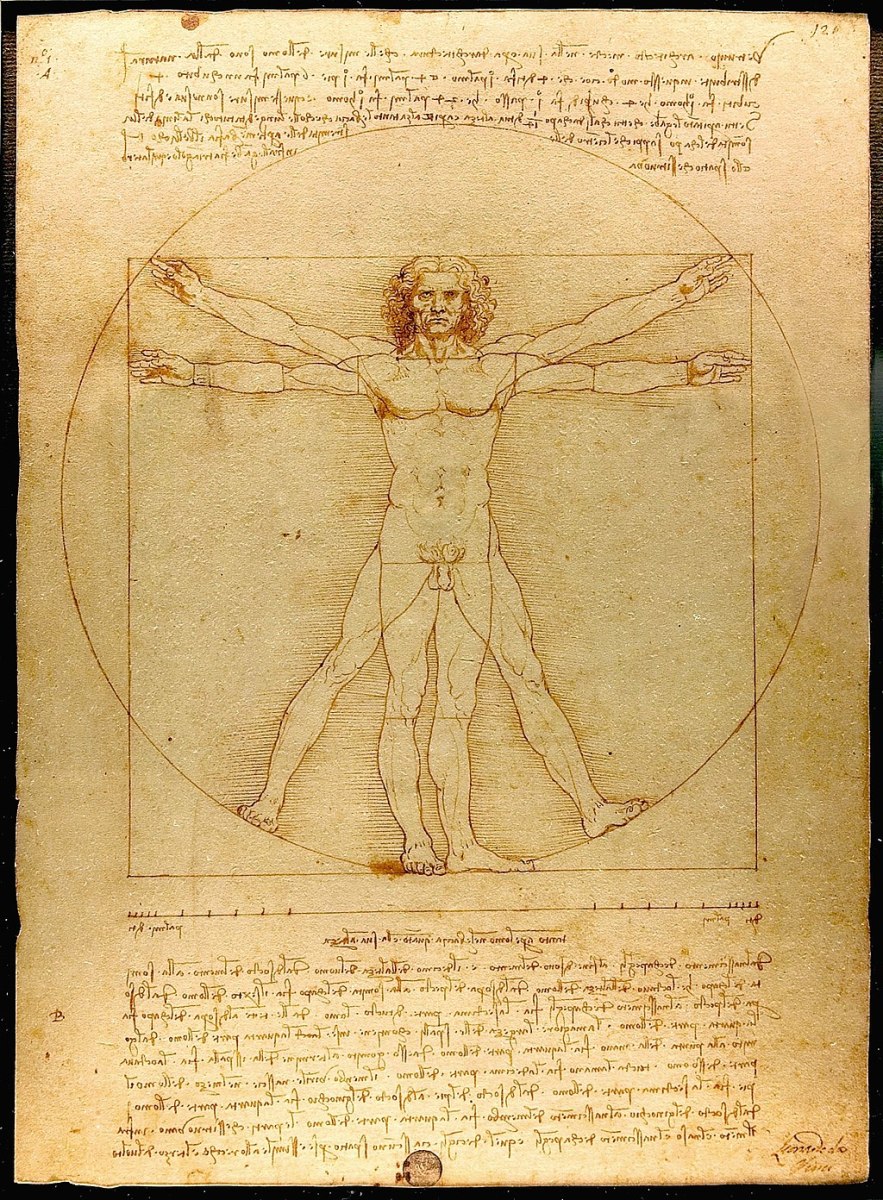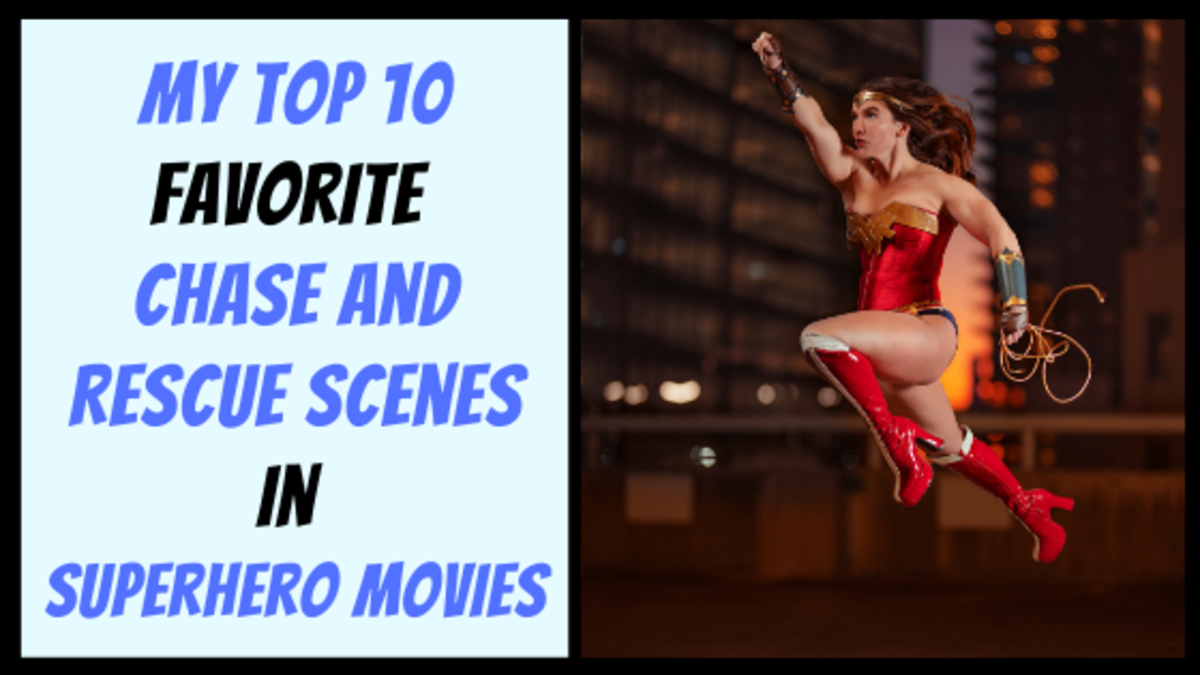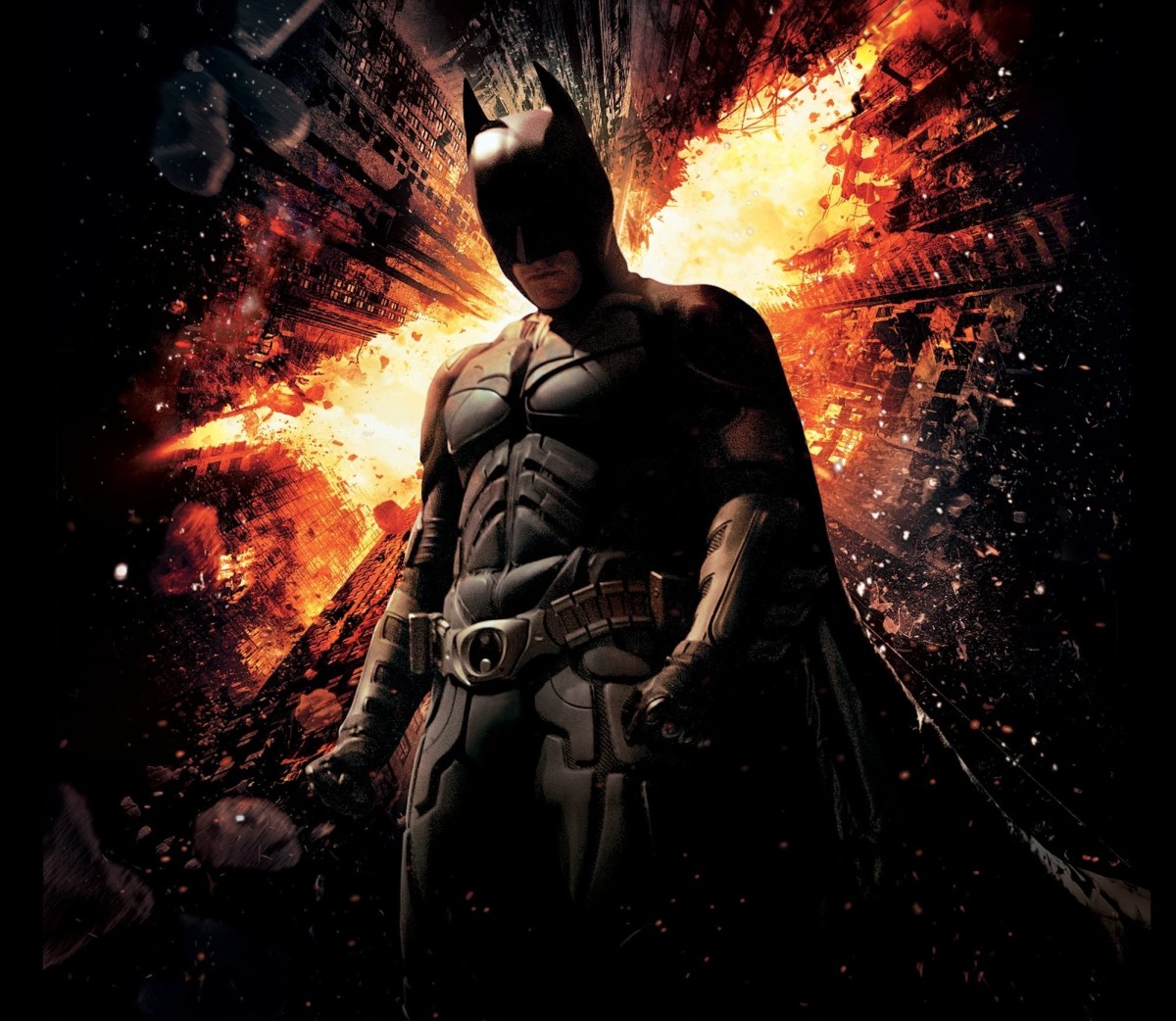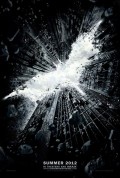- HubPages»
- Entertainment and Media»
- Movies & Movie Reviews»
- Science Fiction & Fantasy Films
Building the Superhero Megafranchise
The megafranchise is where two or more separate film franchises converge, combining them into the same universe. Lets say that Sylvester Stallone was to actually make a Rocky vs. Rambo movie. That would mean that the 6 Rocky and 4 Rambo films would now be part of a bigger 11 film series. Rocky vs. Rambo would attract fans of each individual series, as well as turning Rocky fans onto Rambo ( and visa versa ). That is what combining two franchises with the same star would do. But how about combining franchises with two different stars. How about combining several franchises into one? This year Marvel will be attempting this with four separate film franchises, combined into a megafranchise with the release of the movie The Avengers. And if it becomes the success that Marvel hopes it will be, it could change the entire motion picture industry.
With Hollywood more interested in profits than quality, and more than eager to produce sequels, then why are megafranchises so rare? Why no Blade in the Underworld, Terminator vs. Robocop, Harold & Kumar meets Cheech & Chong, or a film where James Bond, Ethan Hunt, Jason Borne, Jack Ryan and Austin Powers all team up on the same mission? Part of the problem is legality. Different franchises belong to competing studios. Before James Bond can share a martini with Austin Powers, lawyers from M.G.M. and New Line would need to work out the details, such as which studio gets to distribute the film, and which studio gets the home video rights. But that would be after Eon Productions who owns the exclusive rights to the James Bond film series got their lawyers involved. This brings up another point. Most franchises are based on other media, such as books, which brings other rights owners into the mix. You can't do a Harry Potter meets the Twilight vampires without the permission of both J.K. Rowling and Stephenie Meyer, both who would most likely reject the idea. Even when a studio outright owns several film franchises, you cant just combine them. Universal owns both the American Pie and the Fast and the Furious franchises. One is a comedy series about oversexed teens, the other an action series about car thieves. Not that a movie combining both franchises can't be done, but why would Universal make it? The two series are incompatible. But it is not as if Universal has anything against megafranchises. Their studio practically invented the concept.
Monster Mash-Ups
There was a reason why monsters died at the end of their movie. The Motion Picture Production Code, a list of rules governing what could and could not be shown on film in the United States, dictated that all criminal activity depicted in films be met by swift justice by the final reel. Not only were gangsters arrested or killed before the film ended, but all monsters needed to be killed off. The problem with this was that once your monster died then a sequel was impossible. That is, unless that monster had relatives. Dracula (1931) had two sequels, Dracula's Daughter (1936) and Son of Dracula (1943). Both of Dracula's kids were killed at the end of their respective films. Meanwhile over in the Frankenstein franchise, Universal came up with a unique way to circumvent the Production Code. Frankenstein's Monster was indestructible. You couldn't really kill it. The movie Frankenstein (1931) ended with the angry villagers setting fire to the windmill that the Monster is taking refuge in, apparently incinerating it. For the sequel, The Bride of Frankenstein (1935), it was revealed that the monster had survived the fire by falling through the burning floor and into a pit of water just below the windmill. The sequel ended with the Monster purposely blowing up Frankenstein's castle after being rejected by the Bride that was created for him. It seemed as if both monsters were blown up, but in the next sequel, Son of Frankenstein (1939) the Monster is dug up from the rubble of the castle, still alive after decades of being buried. Subsequent sequels followed the same pattern of having the Monster seemingly killed off, only to be dug up and revived in the next film.
In 1943, with the box office on the Frankenstein movies waning, someone came up with a novel idea how to revive the franchise. Universal owned the rights to several other monsters, so why not have the Frankenstein Monster fight one of them? The Wolf Man (1941) had been killed off at the end of his movie. Monster dead, end of franchise. That is, until the movie Frankenstein Meets the Wolf Man (1943). Grave robbers break into the crypt of Larry Talbot, the unfortunate man who received the Werewolf curse in the previous movie. Opening his grave they inadvertently allow his body to be exposed to moonlight streaming through a window. The moonlight does the trick, and the Wolf Man comes back to life. In the morning the Wolf Man transforms back into Larry Talbot, who is shocked to discover that he is alive again, but is determined to find a way to end his life before he kills again. The only possible way to do this is to travel to Frankenstein's castle and see if he can find the Doctor's long lost notebook. By reversing the process that brought The Monster to life, Talbot hopes to end his own life. And wouldn't you know it, Talbot finds the body of the Frankenstein Monster buried under the remains of the castle. While The Frankenstein Monster's repeated revivals could be explained by him being not only indestructible but impervious to being buried for decades, the Wolf Man was dead and brought back to life. And if one Universal monster could be brought back to life, then all of them eventually could. A mad scientist is enlisted to read Frankenstein's notebook, and then use the knowledge to kill both Talbot and the near comatose Monster. But like most mad scientists, he decides he wants to see the Monster fully revived, and ends up reversing the process which in turn also revives Talbot just seconds before a full moon. With both The Wolf Man and The Frankenstein Monster revived in the lab, it is not long before they are both fighting. The angry villagers, who are not thrilled about the Monster being revived again, are now even more furious about a Wolf Man showing up at the same castle. They blow up a dam which in turn floods the castle apparently drowning both The Wolf Man and The Monster. Not so. House of Frankenstein (1944) has The Monster and The Wolf Man fond frozen in ice under the castle. Once again Talbot searches for a scientist who can decipher Frankenstein's notebook and end his curse. Once again he finds a mad scientist who secretly wants to revive Frankenstein's Monster. This time, however, the mad scientist also discovers the skeleton of Dracula, and also discovers that removing the steak from his heart fully revives him, costume and all. Universal had created a megafranchise.
The studio that was known for it's monster movies had finally stumbled on the idea of combining those monsters in the same film. There was a lot of potential in a megafranchise. But amazingly Universal would only produce two more films. House of Dracula (1945) did not even bother explaining how Dracula and The Wolf Man, both killed in the previous move, were revived. Dracula shows up at the castle of a mad scientist looking for a cure to his vampirism. Shortly after Talbot shows up looking for a cure for his aliction as well. Predictably, the buried Frankenstein monster is discovered and dug up. And as in the last movie, the monster remains dormant until the last reel when he is finally revived. Yep, the mad scientist couldn't resist bringing it back to life again. At least this time Talbot is actually cured, and ends up being the hero of the movie destroying both the Monster, and the mad scientist who has turned into a Hyde like creature. Abbott and Costello Meet Frankenstein (1948) ended up being the final film in the series, tying both Abbot and Costello and The Invisible Man into the megafranchise. Shortly after Universal lost interest both in their classic monsters, and in Abbott and Costello. That particular megafranchise was dead.
While Universal came up with the idea of battling monsters, it was Japan's Toho that took it to the next level. The one complaint that audiences had was that most of the movie's plot involved explaining why the monsters were revived and how they ended up in the same castle. Only a few minutes at the end of the film had the monsters actually meeting each other, and it was always cut short, usually by the angry villagers who destroyed the castle. And by the last couple of films the Frankenstein Monster spent the entire film unconscious, only being revived in the last few minutes. Toho studios had a different approach. When their monsters battled, they did so for a good 20 minutes or more. Toho began producing Kaiju films in 1954 with the movie Godzilla, the same year the same studio produced The Seven Samurai. The success of that movie spawned a single sequel, and then a new Kaiju film featuring a new monster every year after that. Meanwhile back in Hollywood, Willis O'Brien and producer John Beck had obtained the rights to use King Kong in new movies, and was attempting to make a film where King Kong battled the Frankenstein Monster, this after another mad scientist accidentally makes the monster into a giant while trying to once again revive it. No studio was interested in the project, and it was eventually shopped to Toho, who were interested in making the film provided Frankenstein was replaced with Godzilla. King Kong vs. Godzilla (1962) became a huge worldwide hit, giving Toho the idea of having Godzilla battle other monsters. It was soon followed by Mothra vs. Godzilla (1964) and Three Giant Monsters: The Greatest Battle on Earth (1964) [ U.S. title Gridrah, The Three Headed Monster ] which pitted Godzilla, Rodan and Mothra against King Ghidorah. In 1968 Toho produced Charge of the Monsters [ U.S. title Destroy All Monsters ] which combined nearly all their monsters in the same movie. One notable absence was King Kong. Toho, which had also produced King Kong's Counterattack (1967) [ U.S. title King Kong Escapes ] was unable to use the character again when the rights they bought from John Beck expired. Toho would continue producing Kaiju films through 2004's Godzilla: Final Wars.
Universal and Toho were able to create their megafranchises because each studio had built up their own roster of monsters they owned the rights to. But other famous movie monsters were scattered among different studios and producers. In 1987 Paramount Studios, owner of the Friday the 13th franchise, wanted to have Jason meet and fight Freddy Krueger from the Nightmare on Elm Street franchise. Only a few years earlier Paramount had decided to end the series with the movie Friday the 13th: The Final Chapter (1984) where one of his intended victims cuts him through his head with a machete. That film did so well at the box office that Paramount ended up breaking it's promise to end the series. Friday the 13th: A New Beginning (1985) featured a copycat killer. But with a drop off in box office revenues Paramount Jason needed to be resurrected with the next movie Friday the 13th Part VI: Jason Lives (1986) Even though Paramount brought Jason back to life the box office continued to drop off. The idea of having Jason fighting another famous movie monster was an attempt to revive interest in the franchise, and New Line who owned the rights to Freddy Krueger were willing to make a deal. But then the lawyers of each studio stepped in. While plans for a crossover movie stalled Paramount released Friday the 13th Part VII: The New Blood (1988) which had Jason fighting a girl with telekinetic powers. Once again it made less money than the previous film. In one last attempt to generate interest in the series Paramount released Friday the 13th Part VIII: Jason Takes Manhattan (1989). But even having Jason visiting the Big Apple did not help the box office. It made $4 million less than the previous film. Paramount had enough. The franchise was sold to New Line, who in turn set up for the inevitable cross over film by sending both their monsters to hell with the movies Freddy's Dead: The Final Nightmare (1991) and Jason Goes To Hell: The Final Friday (1993) which ends with Freddy Krueger's hand appearing on screen for a brief second to drag Jason's mask into the vortex to hell. Even with New Line owning both franchises, it took them an entire decade to finally release Freddy vs. Jason (2003). In the meantime they released Wes Craven's New Nightmare (1994) and Jason X (2001) which takes place in the future. With the creation of the Jason/Freddy megafranchise, there was talk of having Jason fight Michael Myers, Chucky or some other popular movie monster. It never happened. New Line ended up rebooting both the Friday the 13th and Nightmare on Elm Street series with no plans for any further monster mash-up.
Before I get off the topic of monster mash-ups I have to mention Alien vs. Predator (2004), released in response to New Line's Freddy vs. Jason. 20th Century Fox owned both franchises, but it never occurred to them to combine both until Dark Horse Comics came up with the idea. Dark Horse had the rights to publish comic books based on both franchises, and in 1990 decided to combine both in a 4 issue miniseries Aliens vs. Predator. The success of that comic had 20th Century Fox contemplating a movie adaption, but did not get around to green lighting the project until production of Freddy vs. Jason began generating buzz. Two Alien vs. Predator films were made, making it an 8 film megafranchise in all. As it turns out, Aliens vs Predator was not the only comic book to inspire the creation of a megafranchise.
Superhero Roll Call
Comic book companies represent the ultimate in the megafranchise concept with characters regularly making appearances in each others books, creating their own "universe". But there was a learning curve. National Comics had slowly built up a roster of popular superheros, including Batman, The Flash, Wonder Woman and the original and most popular superhero Superman. But it never occurred to them to have characters from their titles cross over to any other books. This is why there was a redundancy of villains, such as having Mr Freeze in Batman and Captain Cold over in The Flash. Each hero lived and operated in their own fictitious city, and that was that. One exception was the Justice Sociert of America, a sort of gentleman's club for superheros who did not yet have their own comic book. There they talked about their individual exploits, including a flashback to that story. Occasionally members of the JSA would even ban together to work on the same case. National Comics stuck to it's edict, and retired heroes from the JSA whenever they got their own book, segregating them from the JSA. The only other example of superheroes guest staring in the books of other superheroes was the occasional cover during the war bonds drive. While Batman and Superman may have shared the same cover, they never crossed paths inside the book. Perhaps one of the reasons for National not commissioning crossover comics was the complicated arrangement of copyrights and trademarks as a result of National being a consolidation of more than one comic book company, and the still unclear legal rights to the heroes between National and the writers and artists who created them. Or perhaps no one at National thought of a crossover.
In 1940, only a year after his creation, Superman had his own radio show. A scripted drama series that was syndicated out of New Jersey's WWOR, eventually moving to network radio by the 1950s. It was the radio broadcast that invented most of the Superman cannon, inventing such things as Kryptonite, such characters as Lex Luthor and even giving Superman some powers that the comic book never thought of. Whatever the writers of the radio show invented inevitably ended up on the pages of the comic book. On March 2, 1945 the radio show introduced another idea. Superman spots a drifting rowboat with a boy passed out in it. Rescuing the wounded boy Superman notes that he is wearing a strange costume, a mask, red vest and yellow cape. He realizes that he has just rescued Robin, the Boy Wonder, and is soon in contact with Batman himself. Batman became a regular character on the Superman show, often subbing for the Man of Steel whenever he was incapacitated by Kryptonite or out of town. It would take a few more years but eventually National had Batman and Superman meeting in the comic book itself.
As National became DC, the popularity of superheroes waned. Most companies had abandoned writing superhero comics in favor of one shot science fiction and horror stories. DC itself had cancelled many of their superhero comics including the Justice Society of America who were replaced in their own book by one shot western stories. Superman and Batman just barely survived. When the Comic Code Authority was created in the mid '50s limiting what comic books could be published and killing off the more popular horror genre, DC made a return to Superheroes, reviving many of their abandoned titles. Looking to revive the Justice Society of America as well, DC renamed it Justice League of America. This time it's members were DC's most popular heroes including Batman and Superman, and this time instead of being a social club the Justice League spent most of their time as an active team battling threats to mankind. The Justice League of America became such a huge hit that it inspired rival Timely Comics to create their own superhero team. Timely had published a popular superhero book in the mid 1940s called Marvel Mystery Comics which included The Human Torch, The Sub Mariner and The Angel, and would eventually include stories featuring Ka-Zar the Jungle Lord, The Vision, Electro, The Masked Rider and American Ace. Timely followed the success of this book with Captain America Comics, as well as other less popular superheroes in other books. Timely cancelled all their superhero comics by the 1950s and like the other companies moved into sci-fi and horror as well as other one shot story titles. In 1961 Timely asked editor-in-chief Stan Lee to create a new superhero title similar to the Justice League of America. Under the new logo Marvel Comics Stan Lee and Jack Kirby created and published The Fantastic Four, soon to be followed by a slew of solo superheroes in their own books. From the start Lee made sure that his heroes were all part of the same universe and aware of each other's presence. For one thing most of his heroes were based in New York City instead of off in their own separate fictitious cities. In his first issue Spider-Man visited the Fantastic Four, asking them if they needed a new member and how much the job paid.
Stan Lee and his staff were prolific, creating six successful superheroes after The Fantastic Four, and about five times as many popular supervillains, all in less than two years. In the spring of 1963 Lee was creating his second superteam, the Uncanny X-Men. All of Marvel's heroes and villains had been given origin stories as to how they obtained their powers ( mostly through the miracle of accidental exposure to radiation ) and by the time Lee had gotten to the X-Men that well had run dry. Now he was facing having to come up with the origins of five heroes, one handler and one villain. His solution, they were all mutants. All born with their powers. Marvel now had two superhero teams, but had not actually created a title that was the equivalent of JLA. Lee wanted a team composed of Marvel's best heroes, banding together the same way the JLA had. This had not been possible two years earlier, but now Marvel had enough superheroes to do so. So the same month that the Uncanny X-Men made their debut, so did The Avengers. Iron Man, The Incredible Hulk and Antman end up helping Thor battle his nemesis Loki, and realizing they made a powerful team, decide to stay together permanently. Lee expected The Avengers to grow as a team as he and his staff created more superheroes. But Lee had not forgotten Timely's superheroes from the 1840s. He had already brought back The Submariner as a villain in an issue of The Fantastic Four, now it was Captain America's turn. Captain's two decade absence was explained when his body was found in arctic ice and thawed out. Kept alive by his powers, and kept young by being frozen, the fully recovered Captain America was ready to join The Avengers. The Marvel universe continued to grow. New writers and editors created new characters that ranged from the killer vigilante The Punisher, to the cuddly but neurotic Howard the Duck. As Marvel's popularity grew, DC's sales steadily declined. But while Marvel was beating DC on the newsstands, DC was dominating in the movie theaters and on television.
Superheroes Go To The Movies
During the 1940s DC saw two of it's heroes make it to the big screen. Batman and Superman both had their own film serials. Timely was also represented on the big screen with the Captain America serial. In the 1950s DC returned to the big screen with Superman and the Mole Men. The film also served as a pilot for the syndicated series The Adventures of Superman. They had success again in 1966 with a Batman television series on ABC, which in turn lead to the production of a theatrical Batman film with the same cast. In the 1970s DC ended up under the ownership of the movie studio and media giant Warner Brothers. Thanks to this new partnership Superman returned to the big screen In 1978 as part of a multimillion dollar production, followed two years later with a sequel. Both were huge box office hits. And while after that the Superman franchise went downhill quickly, Warner Brothers rebounded with Tim Burton's adaption of Batman in 1989, followed by Batman Returns (1992) and Batman Forever (1995). Critics and audiences hated Batman & Robin (1997), but it was still another box office hit. Other comic book companies saw their characters make it to the big screen. Mirage Studio's Teenage Mutant Ninja Turtles, Tribune Syndicate's Dick Tracy, Pacific Comics The Rocketeer and Dark Horse Comics The Mask.
Marvel Comics was not as lucky. Their one lone movie to make it to the big screen was Howard the Duck (1986). George Lucas was a fan of the comic book during the 70s and had turned his friends Willard Huyck and Gloria Katz onto it. They in turn were motivated to make a movie based on the character and Lucas agreed to sign on as producer. Universal green lighted the project because they wanted a George Lucas film. The film was a financial and critical flop, and was soon considered one of the worst movies ever made. The next film based on a Marvel comic was The Punisher (1989), which ended up being pulled from release. This was due to financial troubles by it's distributor New World Pictures, but due to the negative reviews the film was getting overseas, had the reputation of not being released because it was awful. This was followed by a big screen adaption of Captain America (1990) which was also pulled from distribution and also gained bad reviews when screened overseas. This was followed by The Fantastic Four (1994) produced by Roger Corman and never released, not even overseas. The story behind The Fantastic Four was that Constantin Films had the film rights to the characters, but would have lost the rights if they did not produce a movie by a specific date. Constantin had not raised the money needed to produce the film they wanted to make, so hired Roger Corman to produce a cheap film that would satisfy their legal obligations. Constantin had no intentions of ever releasing the Roger Corman version, and would ultimately produce for 20th Century Fox The Fantastic Four movie released in 2005. But to the rest of the world it looked as if every film based on a marvel comic was so bad that they could not even be released to theaters.
Marvel's luck finally turned around just as Warner Brothers began their hiatus on superhero films. Blade (1998) was the first in a successful trilogy. This was followed by X-Men (2000) and it's successful franchise of films. And Spider-Man (2002) which also spawned a successful franchise. DC made its return to film with Catwoman (2004), a project that was suppose to be a spin-off of the Batman franchise, but ended up being a stand alone film with a new Catwoman who had nothing to do with the comic book version. The film was a critical disaster, and the box office bomb. But DC rebounded a year later with Batman Begins (2005) the first in the critically acclaimed reboot of the Batman franchise. It was like that with most superhero films, alternating between the really good and really bad productions. Even with the good superhero movies, the franchises that followed usually went downhill. The comic book companies, who all had a stake in the reputation of their superheroes, blamed studio executives who they felt were inept when it came to adapting comic books to the screen. Marvel Studios was initially created to promote and sell the rights of Marvel characters to television and movie studios. But eventually Marvel Studios became more proactive with the production of the films in an attempt to prevent a disaster like Howard the Duck from happening again. When that film came out, Marvel had just settled a lawsuit with the book's creator Steve Gerber over who owned the character. Marvel had plans to relaunch the character with the publicity the film would bring. The film being a critical flop poisoned the character, killing Marvel's plans to publish any new books featuring him. Howard would not return until the 90's, and then only as a supporting character in The Sensational She-Hulk, and then only because Steve Gerber was writing that book.
Enter The Avengers
There had never been a superhero movie megafranchise. Even though hundreds of superheroes existed, there had never been any attempt to cross one character over into another character's film. Warner Brothers owned the rights to all the DC superheroes, but they never bothered to have one hero guest star in another hero's film. Warner did some pre production on a proposed Batman vs. Superman film, and then promptly killed the project in favor of producing solo Batman and Superman films. Going back to the 70s there had been talk of producing a Justice League of America movie, but Warner made no hard commitment to the project until 2007, and even now it is still only in the planning stages. The closest thing to a crossover came with the film Fantastic Four: Rise of the Silver Surfer (2007), although Silver Surfer did begin as a Fantastic Four villain before he became a hero in his own book. The problem with putting together superhero megafranchises is that the rights to most of the characters are scattered between production companies, many who spend years attempting to produce their own Superhero films. As already mentioned, Constantin Films took extreme measures to hold on to their rights to The Fantastic Four. The film rights were purchased in 1986 and were held on to for 20 years before Constantine was able to finally produce a real Fantastic Four film, and preventing any other studio to produce their own film based on the comic.
In 2005 Marvel Studios set out to do what Warner Brothers had failed to do. Produce an Avengers film featuring characters that would also be part of their own individual franchises. This would involve regaining the rights to The Hulk from Valhalla Motion Pictures and Universal Studios. After careful negotiations Universal agreed to reboot the Hulk franchise, and then allow the character to appear in a film to be produced by a competing studio. Marvel Studios then began reaquiering rights to other proposed Avenger members, some characters which had been langushing in pre-production limbo with different production companies for decades. The next hurtle was to find a studio willing to produce what could be up to 8 different superhero franchises simultaneously. The studio that agreed was Paramount Pictures. Paramount had so far only produced one superhero film in 1996, The Phantom, which had bombed at the box office. The first film to be released by Paramount would be Iron Man (2008). This wold be followed by Universal's Hulk reboot, Iron Man 2 (2010), Thor (2011) and finally Captain America: The First Avenger (2011). If any one of these films tanked then the future of any Avengers film would be in doubt. Fortunately all the side franchise films were successful. The careful planning for an Avenger film went beyond legalities. Following the ending credits of Iron Man is a short scene where Samuel L Jackson as Nick Fury drops in on Iron Man's alter ego Tony Stark, tells him he is not the only superhero in the world, and says that he wants to discuss the Avengers Initiative just as the movie fades out. Similarly, the last scene of The Incredible Hulk (2008) has Tony Stark in a brief scene announcing he is putting a team together. The next three films would also have post credit sequences teasing the upcoming Avengers film.
The pay off is The Avengers (2012) combining Iron Man, The Incredible Hulk, Thor and Captain America with Black Widow ( that character introduced in Iron Man 2, and possibly being spun off into her own franchise ) and Hawkeye ( franchise still pending ) as a single team that was assembled by Nick Fury ( franchise for this character also pending ). In 2009 Disney Studios purchased Marvel Comics and has since taken over distribution of the Avengers megafranchise ( excluding Universal's Hulk franchise ) while Paramount will retain a steak in the films. Disney's ownership of the Marvel characters is yet another game changer. The Disney corporation has always been protective of the characters they own. Walt Disney's first successful character was Oswald the Lucky Rabbit. Not thorougly reading his contract with producer Charles Mintz, in 1928 he ended up losing Oswald to Universal. From that day on Disney made sure any character he created was the sole property of Disney studios. It was very rare for any Disney character to be lent out to any other studio. More recently the Disney company has been buying the rights to characters created outside their studio, including The Muppets and Marvel, and has even been able to re-acquire the rights to Oswald. It is very likely that Disney will be just as protective of the Marvel characters as they are with Mickey Mouse.
Strangely enough, Disney now owns Howard the Duck. In 1977 Disney threatened to sue Marvel claiming that Howard infringed on their trademarked character Donald Duck. Marvel Comics decided it was better to yield to Disney's lawyers. Disney, in turn, handed Marvel a redesigned Howard with a larger head, thicker bill, and wearing pants. Marvel could continue publishing the redesigned Howard that looked nothing like Donald, and would agree never to waver from that design. This was Disney's steps to protect their own character, threatened legal action and forcing Marvel to radically redesign one of their characters out of the possibility that someone would mistake Howard for Donald. Today those same Disney lawyers who attacked then altered the Marvel universe are now protecting that same universe. It is not in Disney's best interest to sell the rights to Marvel characters to other studios who in turn could damage their reputation with a bad movie. Disney may have not cared for Howard the Duck in 1977, but today they would do anything to prevent that same character from ending up in, well, the same movie it ended up in back in 1986.
Currently the rights to many of the Marvel characters are scattered between production companies and studios. Five franchises are currently active, Spider-Man ( Columbia Pictures ), X-Men ( 20th Century Fox ), The Hulk ( Universal ), Ghost Rider ( Columbia Pictures ) and Deadpool ( New Line Cinema ), while several other franchises based on Marvel characters are in development. It may take some time for those rights to expire and revert back to Disney. They do have both the money and muscle to convince others to sell the rights back. But as seen with Constantine, if a production company wants to hold on to those rights they will take extreme measures to do so. Meanwhile Marvel Studios continues to work with the production companies they sold their characters to, hoping to negotiate better pictures featuring them. But there are still disasters. There have been three Punisher films. The first which was not released to theaters, a reboot in 2004, and yet another reboot in 2008. All three were poorly reviewed. While The Punisher is hardly the sort of character Disney would like to associate with, they neither have any interest in devaluing that same character through repeated bad movie adaptions. The sooner Disney regains the rights to The Punisher, the better for them. And once Disney begins to retrieve the rights to the Marvel characters, then what? If they are no longer farming them out to rival studios then the only alternative is to make the movies themselves. This would only give Marvel Studios more of an opportunity for expanding their experiment. The Hulk could clash with Spider-Man. Spider-Man could team up with Daredevil and The Punisher. Daredevil could aid the Fantastic Four. This happens all the time in the Comic Books. In the movies, this could expand the already existing Avengers megafranchise to include every Marvel superhero, both the films released to theaters and those released directly to home video.
The question is, how much of an effect this will have on the rest of the movie industry. It could influence Warner Brothers, who are currently stalled on several DC projects including the much delayed Justice League movie. But how will this translate to other movie studios? Unlike Disney which currently owns all of the Marvel characters, and Warner Brothers which owns all the DC characters, what do the other studios have? Unlike the monster franchises of the past and current superhero franchises, most motion picture companies simply do not have compatible franchises which can be combined. But it does not have to be like that. Paramount had the makings of a megafranchise with Star Trek. On television Paramount was able to have two different Star Trek franchise series airing concurrently. The Next Generation overlapped with Deep Space 9 by one season. Deep Space 9 overlapped with Voyager by four seasons. The Next Generation was originally planned for 8 seasons, but had it's run ended a year earlier so the cast could be moved up to the motion picture franchise. Had it lasted 8 seasons then Paramount would have had three Star Trek series airing on television simultaneously. It is the movie franchise where Paramount was less ambitious. The first six films in the franchise featured the characters from the original 60s television series, and was successful despite every alternative movie being a critical flop. Paramount made the decision that beginning with the seventh film they would begin using characters from The Next Generation, reasoning that they wanted to strart making movies with the yonger Next Generation cast. The transition film was called Star Trek: Generations (1994), released only a few month after the series finale of The Next Generation. Featuring characters from both the original series and The Next Generation, it was notable for having the death of Captain Kirk. Paramount could have continued making movies with the original cast while begining a second film franchise with the Next Generation cast, but instead decided that there should only be a single Star Trek film franchise. If the studio had been more ambitious with their own property then there could have been several Star Trek franchise film series all bound by the same universe.
Much like with Star Trek, other studios do own property that could easily be spun off into megafranchises. Right now the X-Men franchise, which was planned as a three film arc, has spun off into prequels called X-Men Origins. And there is property the studios could buy that could easily be turned into a megafranchise. L Frank Baum wrote 14 books in the Wizard of Oz series, each introducing new characters and expanding on the Oz universe. Rights to the books have been purchased many times in the past, but always resulting in a stand alone feature film with no direct sequel. A studio that owned the rights to the books could easily spin the first story off into several side franchises. Perhaps a series of Scarecrow movies, another series of Tin Woodman movies, and another series of Tik-Tok movies, while simultaneously tying in to movies featuring Dorothy and the Wizard. L Frank Baum was not the only author to create a mini universe with a series of books. There is plenty more property where that came from. Another possibility is purchasing the rights to other franchises from competing studios. New Line was able to do so with Freddy Kruger and Jason, and had the money, could have purchased the rights to other monsters. A showdown between Michael Myers and Jason would have made a fortune at the box office, if only New Line could have secured the rights to the Halloween series. Or simply, studios could create their own original property, only plan it to expand past the original film into side sequels and spin offs. Or, as with the Universal Monsters and Marvel superheroes, create several franchises that will eventually converge in one megafranchise film. This all depends on how well the Marvel megafranchise performs at the box office. Hollywood in notorious for copying the success of other studios. Warner Brothers broke box office records with The Jazz Singer (1927) and within two years every studio was producing sound pictures. The success of Star Wars Episode IV: A New Hope (1977) lead to an over saturation of special effects driven fantasy films which persists to this day. If the megafranchise proves to be a successful business model, then in the next few years it will be the norm. We may be seeing that Rocky vs. Rambo movie after all.


